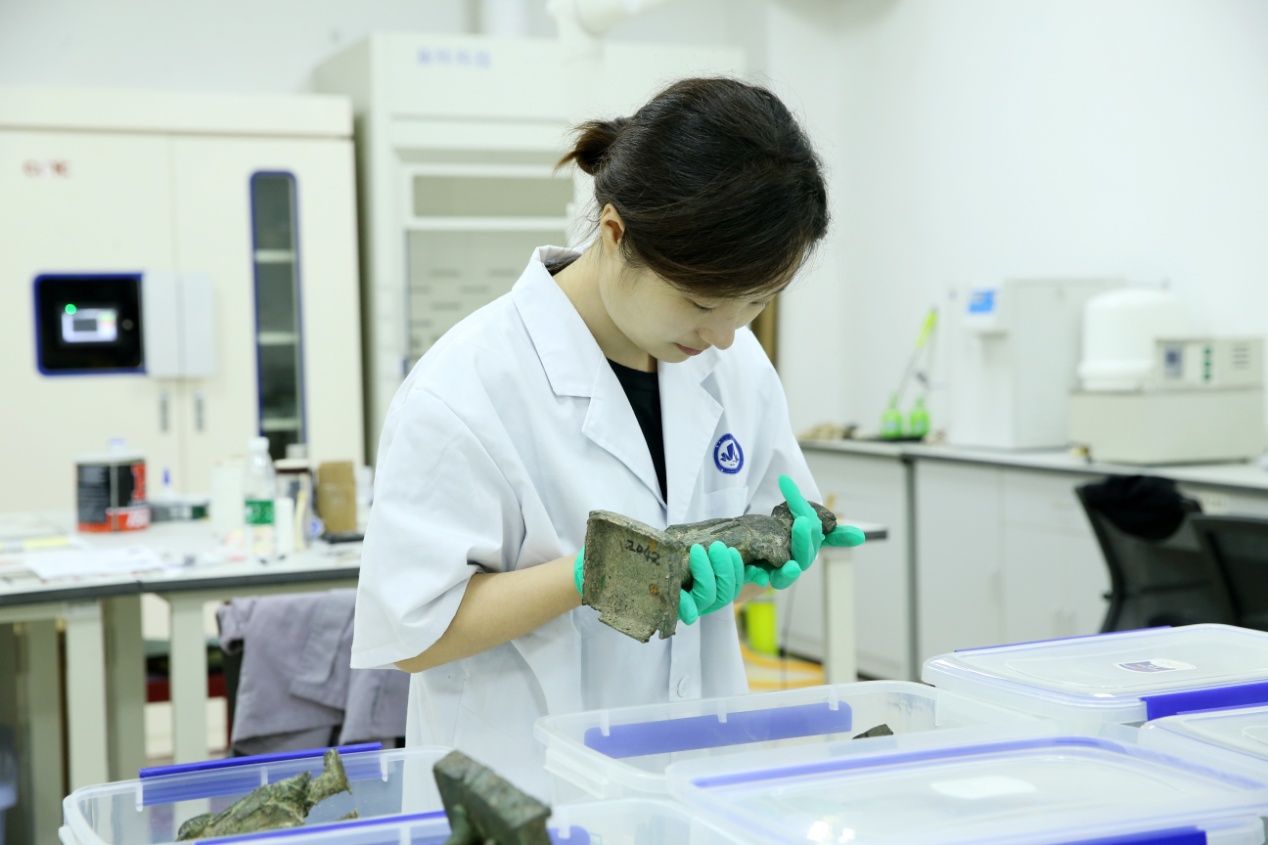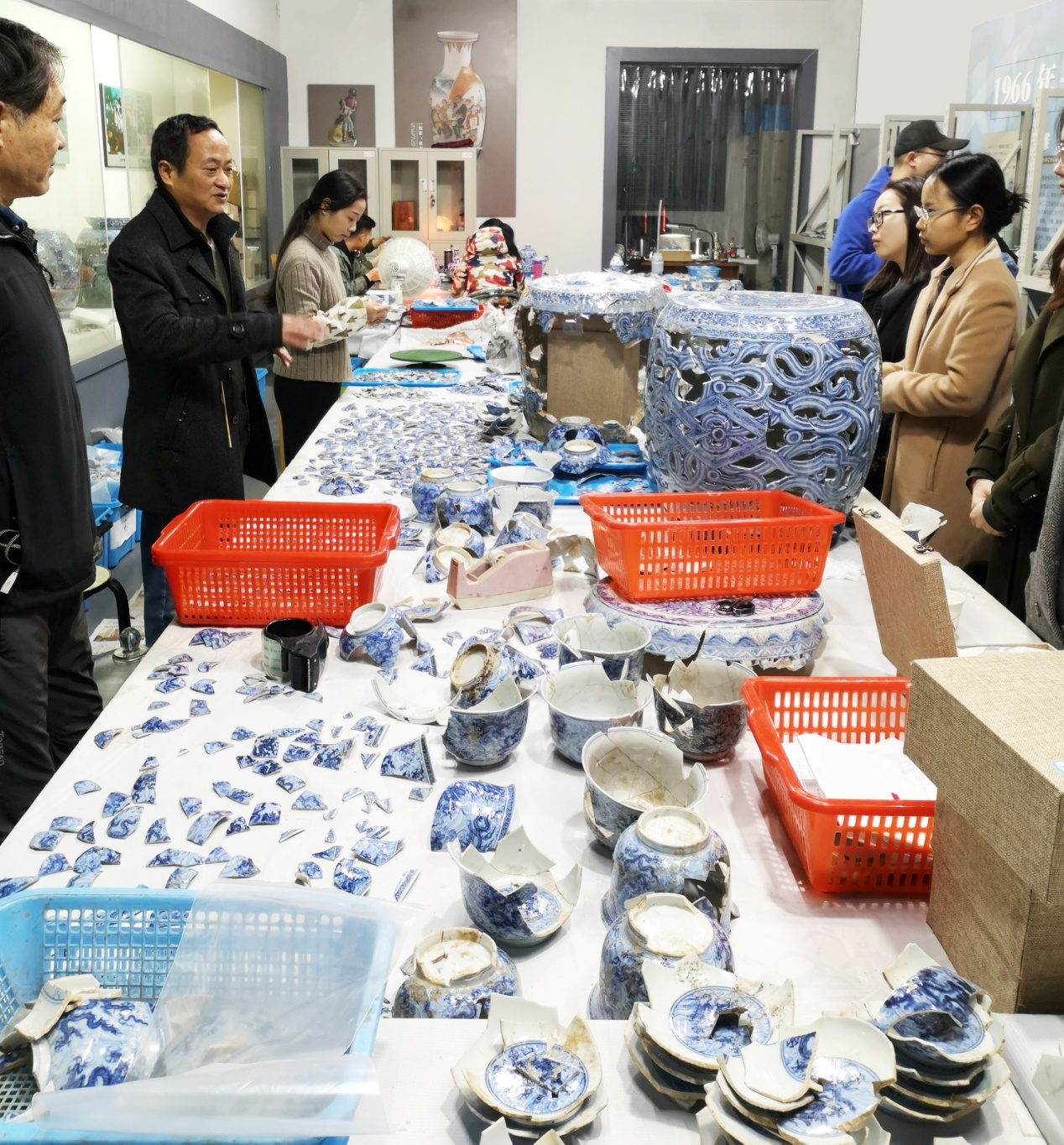Cultivating talents to save cultural relics
- By Zhang Rui
 0 Comment(s)
0 Comment(s) Print
Print E-mail China.org.cn, November 29, 2021
E-mail China.org.cn, November 29, 2021
In light of China's severe lack of talents needed to repair more than 100 million damaged but treasured cultural relics, the Academy of Arts & Design at Tsinghua University (AADTHU) is attempting to contribute its efforts by cultivating high-end restoration professionals.

"According to statistics, the number of full-time cultural relics repairers in China's various museums and cultural relics protection institutions number about 3,000, but we have more than 100 million pieces of damaged relics that need urgent repair and protection. The lack of talent issue is impending," Yang Peizhang, an associate professor of the Department of Arts & Crafts at the academy, told China.org.cn.
Collaborating with professional institutions such as the Palace Museum and America's Hagley Museum & Library, AADTHU has set up a postgraduate program to nurture such cultural relic restoration talents since 2018. Meanwhile, Tsinghua University and the National Museum of China established a joint center last year to protect cultural relics using various scientific and technological methods.
"Our main goal is to produce talents that understand both art and technology," Prof. Yang said.
The world hungers for cultural relics repairers
Lacking suitable talents and experts is not just a problem in China, but is also an issue worldwide. For example, Yang said, museums in the United States and Europe also house many traditional Chinese arts and crafts, but they're unable to restore them. As such, they need talents to help them.

"There are not enough Chinese experts to handle China's own relics," Yang pointed out. In 2016, a smash hit TV documentary series "Masters in Forbidden City" popularized the profession by giving a sneak-peek into repairers' lives and work. The show generated huge interest from the public, especially among the younger generations.
In fact, more than 10 Tsinghua alumni currently work in the Forbidden City. Min Junrong, one of the graduates, has been working as a restorer of antiquities and lacquer ware in the quiet palace courtyard of the Palace Museum for over 10 years. "The craft and creative techniques taught to me by my professors at Tsinghua continue to help me today," Min said.
Yang believed there will soon be a new category of work, officially defined as "cultural relics repairer," since Chinese human resources authorities are already working on it.
So far, many such talents are from vocational schools and colleges, and are more technology-oriented. But Yang said Tsinghua's postgraduate program focuses on interdisciplinary talents, as typical restoration projects combine technology and the arts. Since its launch in 2018, this year saw the graduation of the first nine postgraduates from the program. One of the outstanding graduation works exhibited at the academy's hall is Liu Fangzhou's restoration of an antique lacquer gauze.
The lacquer gauze in the Fuwang Pavilion in the Ningshou Palace Garden is gorgeously decorated and exquisitely made, involving as many as seven kinds of crafts. "Through this opportunity, I cooperated with the Department of Ancient Architecture of the Palace Museum to restore the lacquered yarn decoration so that this work can regain its original appearance," Liu said.
Yang and colleague Duan Yong were Liu's supervisors for the project. According to Yang, the antique lacquer gauze was so severely damaged, and the crafts required to make it no longer exist in China. However, they combed various historical documents - even ones from the National Palace Museum in Taipei - and determined that the original crafts used probably originated in areas south of the Yangtze River. After thorough study, analysis, and multiple trials, Yang said Liu was able to recreate the lost crafts and methodologies, which helped lay a solid foundation for the future restoration of similar relics.
A cross-disciplinary vision for heritage protection
On Aug. 3, 2020, the inaugural ceremony of "Tsinghua University & National Museum of China Joint Research Center for Technological Protection of Cultural Relics" was held at Tsinghua University. Since then, they have jointly undertaken research projects at the national and ministry level, work on key technological breakthroughs. The center is a joint venture involving various schools of the university, such as those of materials, chemistry engineering, architecture, and structural engineering.

Prof. Yang Peizhang stressed the platform is not limited to a certain major but rather is a platform for comprehensive scientific and technological research plus cultural relic protection. These innovative techniques and R&D technologies can combine to develop innovative and more suitable binding agents for Chinese relics and environmental monitoring, sample testing, and traditional artifact restoration.
AADTHU, as one of the major players of the center, has greatly focused on its own advantages - the study of traditional handicrafts for their inheritance and restoration, as the academy's associate professor Wang Xiaoxin put it. But to nurture cross-disciplinary professionals, AADTHU specially designed the master's courses for the undergraduate program, including subjects ranging from material analysis, cultural relics protection laws and regulations, and various restoration techniques on lacquer, glass, pottery, china, and fabrics. Lacquer crafts are a notable example of a mixed medium as they often include decorative materials, modeling materials, and adhesives.
While experts from the Palace Museum and other relics preservation institutions are invited to the university to give students lectures regularly, the COVID-19 pandemic continues to impact international exchanges among relics restoration experts, as well as between intangible cultural heritage crafts teachers and experts.
"International communications and exchanges are good for inheritance and development of the crafts," Wang said, recollecting how a Japanese teacher taught at AADTHU about a lost Chinese craft, which had spread to Japan and still exists but had died out in China. In the future, the academy will continue to push for international cooperation and events, and of course, continue to support the undergraduate program for cultural relics repair.
"Our program is truly a demonstration case, and it might not currently satisfy the nationwide demands for talents," Yang admitted. "Though the number is small, the talents we cultivate can either go onto research institutions and museums or go to colleges to teach new generations of students. This will lead to progress within China's protection of cultural relics."






Go to Forum >>0 Comment(s)